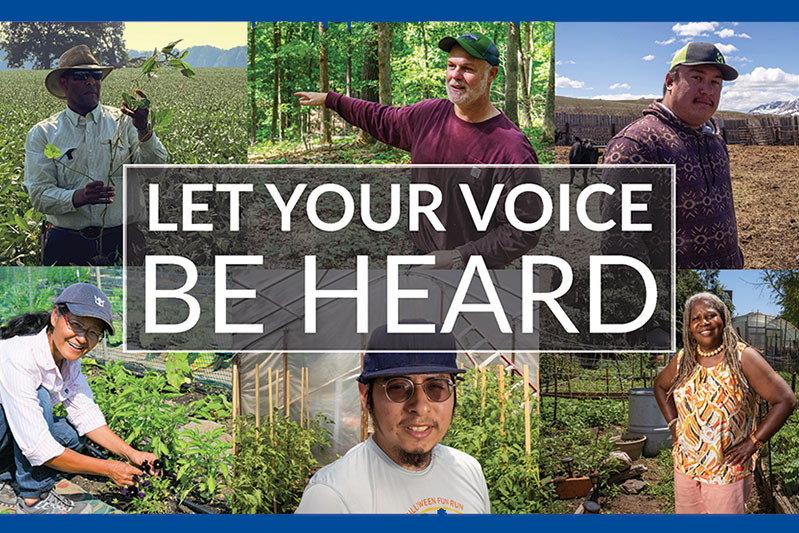
Increasing Farm Diversity: New Resource & Webinar
Planning and installing a new native plant conservation area on the farm is a major management decision that, from start to finish, can be pleasurable and exciting. Besides adding biodiversity and beauty to the farm, climate benefits accrue—shrubs and trees can store significant amounts of carbon in their tissues and the soil. Our new publication describes the steps to getting started. We discuss the details and how these documents fit into our larger suite of tools and resources for diversifying the landscape on a farm.
Download the publication here
Watch the webinar here

Climate and Agriculture Summit Recap
WFA staff members, Jo Ann and Nick, were among the 400 participants at CalCAN's 7th Climate and Agriculture Summit. Nick is second from right in the above photo of current and past GrizzlyCorp Fellows. The Summit included a day of farm tours followed by a conference with workshops and poster presentations. It was a cauldron of inspiring conversation, smart strategizing, and relationship nourishment.
One of the exciting parts of the Summit for WFA was attending the Farm Tours. The first stop at the Center for Land Based Learning (CLBL) in Woodland, CA was inspiring and a great demonstration of the farming practices WFA promotes, including songbird nest boxes, riparian habitat, hedgerows and more! Throughout the conference, participants were creative and eager to evolve how they worked and communicated with each other. For example, in one workshop an important distinction of terminology was made between land stewardship and land management.
You can read more about the Summit and Farm Tour from CalCAN here.

WFA Co-Hosts Field Day with Community Alliance with Family Farmers (CAFF)
On a cool December afternoon at Double A Walnuts, we learned how farmer Alan Siegle (in the red coat above) manages his walnuts as he transitions his acreage to organic production. Cover crops are a big part of his strategy, as are hedgerows. He uses mustard cover crops to help reduce pest nematodes and hedgerows to support beneficial insects and birds. The hedgerow was large - it was planted on two rows and was about 30’ wide and 12’ tall.
Alan’s Barn Owl boxes had already been cleaned out for the year, something all growers should strive to achieve. Alan’s grandson Aiden had built several more nest boxes that would be installed soon. The drumming of Nuttall’s Woodpeckers was heard, and we saw them hard at work pecking for insects - this species is an important predator of codling moths, a major pest of walnuts.

Carbon Sequestration in Hedgerow Biomass and Soil
Global efforts are being made to combat climate change. Mitigation scenarios rely not only on reducing greenhouse gas emissions, but also storing carbon through land-use and forestry activities.
A recent study published in Regional Environmental Change adds to the growing body of literature illustrating the benefits of hedgerows and other conservation plantings for carbon sequestration. The authors compiled data from 83 sites on soil organic carbon (SOC) stocks beneath hedgerows in comparison with adjacent croplands and grasslands, plus biomass data above ground from 64 hedgerows. Hedgerows were estimated to store significantly more carbon than croplands and were on average comparable to estimates for forests.
Read the Study Here

WFA's Upcoming Farm Field Day - Diversifying Orchards for Pest Control, Pollination & Healthy Soil
Join WFA in the field on Wednesday, January 25 to tour native plantings on Juan Santana's almond orchard. In just the last two years, Juan has installed nearly a mile of hedgerows to improve pollination and biodiversity. Juan and other guest speakers will share successes with hedgerows, compost, cover crops, pollination and more!
See the Agenda and Register Here

USDA Releases Nationwide Farmer, Rancher and Forest Manager Survey
WFA encourages farmers and ranchers to share your vital feedback by taking an important nationwide USDA survey by March 31, 2023. Visit www.farmers.gov/survey to access the survey online in multiple languages. The survey will take approximately 10 minutes to complete, and responses are anonymous.
Data collection will assist USDA’s agencies that deliver farm programs, including the Farm Service Agency (FSA), Natural Resources Conservation Service (NRCS) and Risk Management Agency (RMA) in learning about ways to enhance support and improve programs and services, increase access and advance equity for new and existing customers.
Take the Survey

Thank You for Supporting Wild Farming
As we finish out the year, WFA takes pause to thank you, our community of supporters, for joining us in the wild farming movement. In 2022, hundreds of farmers were inspired to bring nature back to our farms and ranches. WFA’s summer field days – finally back in person – were so joyful as growers showcased nest boxes, fragrant bird-filled hedgerows and many other biodiversity supporting practices. Thank you for helping provide farmers and agricultural professionals resources and inspiration to plan and install hedgerows, attract and support beneficial birds for pest control and build wild and resilient farms.
If you haven’t yet made an end of year donation to continue this work in 2023, you may do so here.
|












